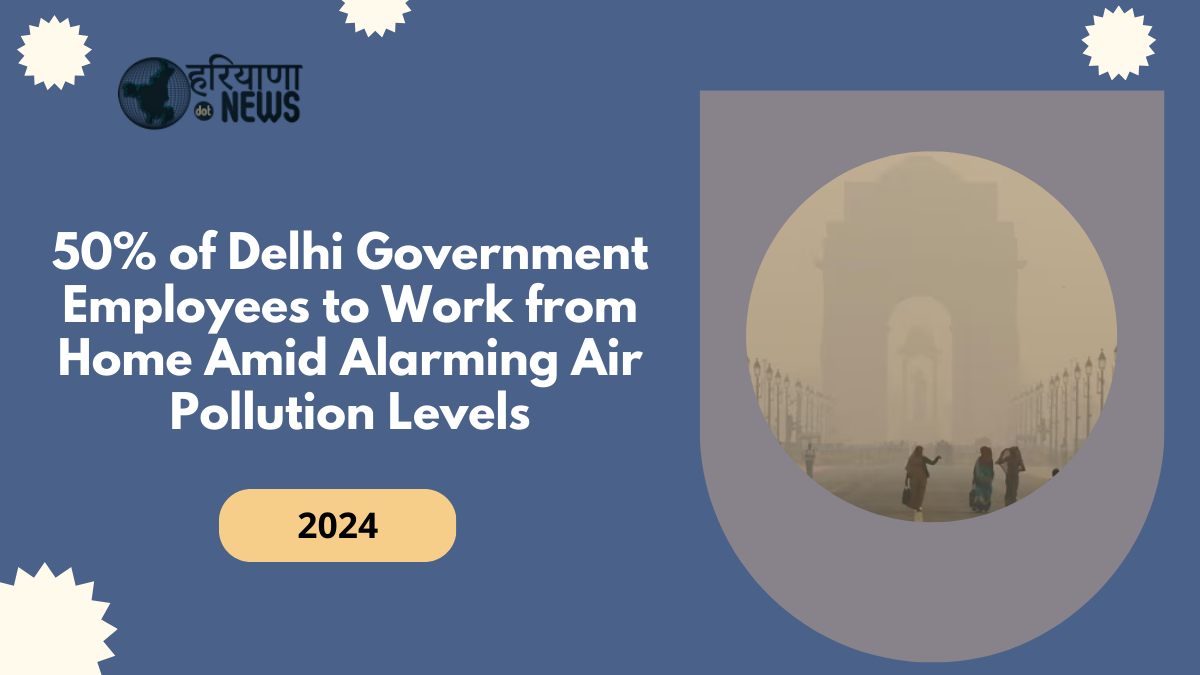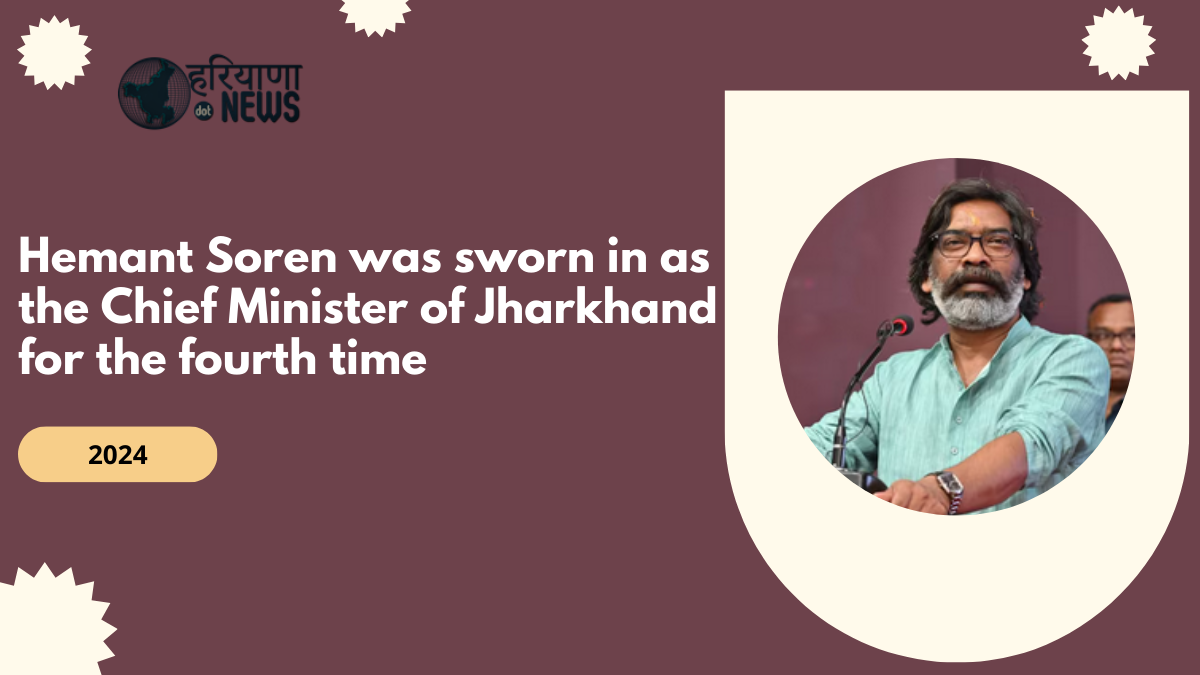Delhi’s air pollution has reached critical levels, prompting immediate government intervention. In a move to address the hazardous air quality, the Delhi government has mandated that 50% of its employees work remotely. Gopal Rai, the city’s Environment Minister, announced this measure on Wednesday, emphasizing its role in mitigating pollution and protecting public health.
Official Announcement and Implementation Plans
In his statement on social media platform X, Rai shared the government’s decision to introduce work-from-home policies for half of the workforce in government offices. He highlighted that the specific implementation details would be discussed in a meeting with senior officials later in the day.
“Given the rising pollution levels, the Delhi government has decided to adopt work-from-home measures for 50% of its employees,” Rai stated. This step aims to reduce vehicular emissions and minimize outdoor exposure, both of which contribute significantly to the deteriorating air quality.
Previous Measures: Staggered Office Timings
Prior to this announcement, the government had already implemented staggered office hours to manage pollution and congestion.
- Municipal Corporation of Delhi (MCD): Operating hours were adjusted to 8:30 AM to 5 PM.
- Delhi Government Offices: Working hours were set from 10 AM to 6:30 PM.
This strategy was designed to reduce peak-hour traffic, a major contributor to Delhi’s air pollution crisis.
Alarming Air Quality: The Current Scenario
Delhi’s air quality remains among the worst in the world, with pollutant levels reaching “severe” and “severe-plus” categories. On Tuesday, the city’s 24-hour average Air Quality Index (AQI) was recorded at 460. While slightly lower than Monday’s alarming 494, it still represents hazardous levels of pollution.
Understanding AQI Levels:
- Severe: AQI between 401 and 450. Exposure can cause respiratory distress and serious health issues for the entire population.
- Severe-plus: AQI between 451 and 500, the highest level on the AQI scale, indicating extreme health risks.
The AQI scale caps at 500, signifying a public health emergency. According to experts, prolonged exposure to such conditions can lead to both immediate and chronic health problems, including lung diseases, cardiovascular complications, and reduced life expectancy.
Weeklong Trends: A Consistent Decline in Air Quality
Data from the Central Pollution Control Board (CPCB) paints a grim picture of Delhi’s air quality over the past week. The AQI has consistently remained at hazardous levels:
- Sunday: 441
- Monday: 417
- November 15: 396
- November 14: 424
- November 13: 418
This data highlights the persistence of the pollution crisis, with only minor fluctuations failing to provide meaningful relief.
 Discovering the Ultimate Benefits of Amla Oil for the Best Haircare Experience
Discovering the Ultimate Benefits of Amla Oil for the Best Haircare Experience
 Mumbai Police Detain Woman for Threatening Call on Prime Minister Modi’s Life
Mumbai Police Detain Woman for Threatening Call on Prime Minister Modi’s Life
 Hemant Soren was sworn in as the Chief Minister of Jharkhand for the fourth time, took oath as Jharkhand’s 14th chief minister
Hemant Soren was sworn in as the Chief Minister of Jharkhand for the fourth time, took oath as Jharkhand’s 14th chief minister
 India’s Strategic Breakthrough: Advancing SLBM Capabilities with INS Arighaat
India’s Strategic Breakthrough: Advancing SLBM Capabilities with INS Arighaat
 Chinmoy Das Arrest: High Court Petition Seeks Ban on ISKCON Amid Rising Violence Against Hindus in Bangladesh
Chinmoy Das Arrest: High Court Petition Seeks Ban on ISKCON Amid Rising Violence Against Hindus in Bangladesh





Emergency Measures Under GRAP
In response to the alarming situation, the Commission for Air Quality Management (CAQM) has activated Stage 4 of the Graded Response Action Plan (GRAP) across Delhi-NCR. These measures are among the strictest implemented to combat pollution and include:
- Halt on Construction Activities: All construction and demolition activities have been temporarily suspended to prevent dust pollution.
- School Closures: Schools are permitted to cancel in-person classes for most students to limit their exposure to harmful air.
- Industrial Curtailment: Industries contributing significantly to air pollution may face restrictions or temporary shutdowns.
Expert Insights on Health Impacts
Medical professionals and environmental experts have voiced concerns about the health consequences of prolonged exposure to severe air pollution.
- Short-term effects: Increased respiratory problems, irritation in the eyes, nose, and throat, and exacerbation of asthma and bronchitis symptoms.
- Long-Term Effects: Risk of chronic respiratory diseases, cardiovascular problems, and weakened immunity over time.
Experts also caution that children, the elderly, and individuals with pre-existing health conditions are especially vulnerable.
Weather Predictions: Limited Relief in Sight
Meteorologists have warned that relief from the current pollution levels is unlikely in the immediate future. Over the next three days, surface-level winds are expected to remain weak, hindering the dispersion of accumulated pollutants. The stagnant air, combined with the cooler temperatures of late November, is likely to trap pollutants near ground level, worsening the situation.
Conclusion: An Ongoing Challenge
The Delhi government’s decision to implement work-from-home measures is a necessary step to address the growing air quality crisis. However, with pollution levels still in the “severe-plus” category and weather conditions offering little respite, the city faces an ongoing battle to safeguard public health. Additional long-term solutions, such as transitioning to cleaner energy sources and stricter emission controls, will be crucial to prevent such crises in the future.
Click here to know more.






